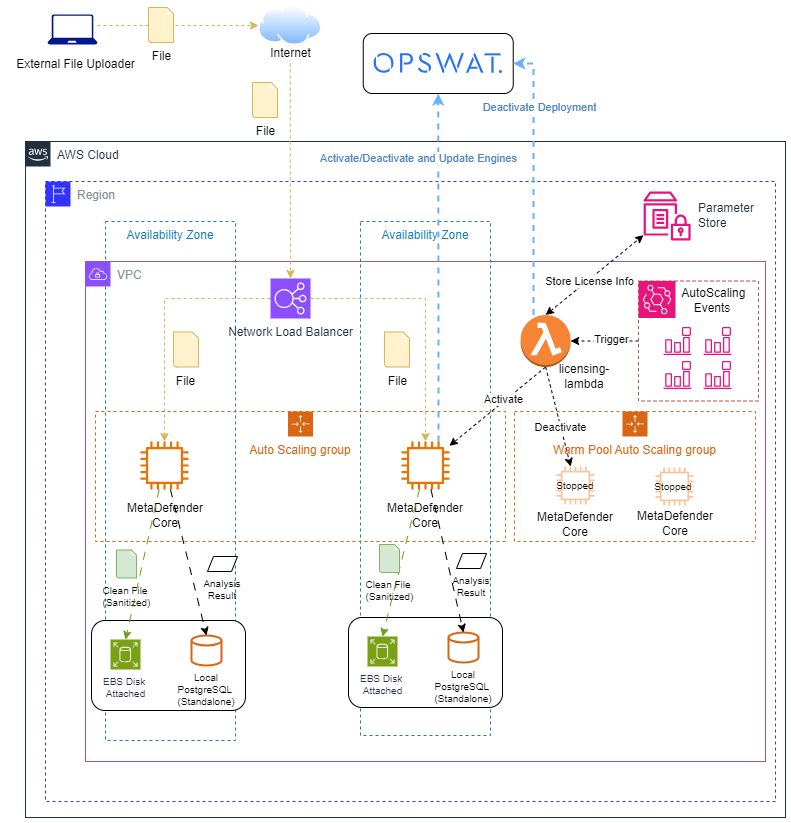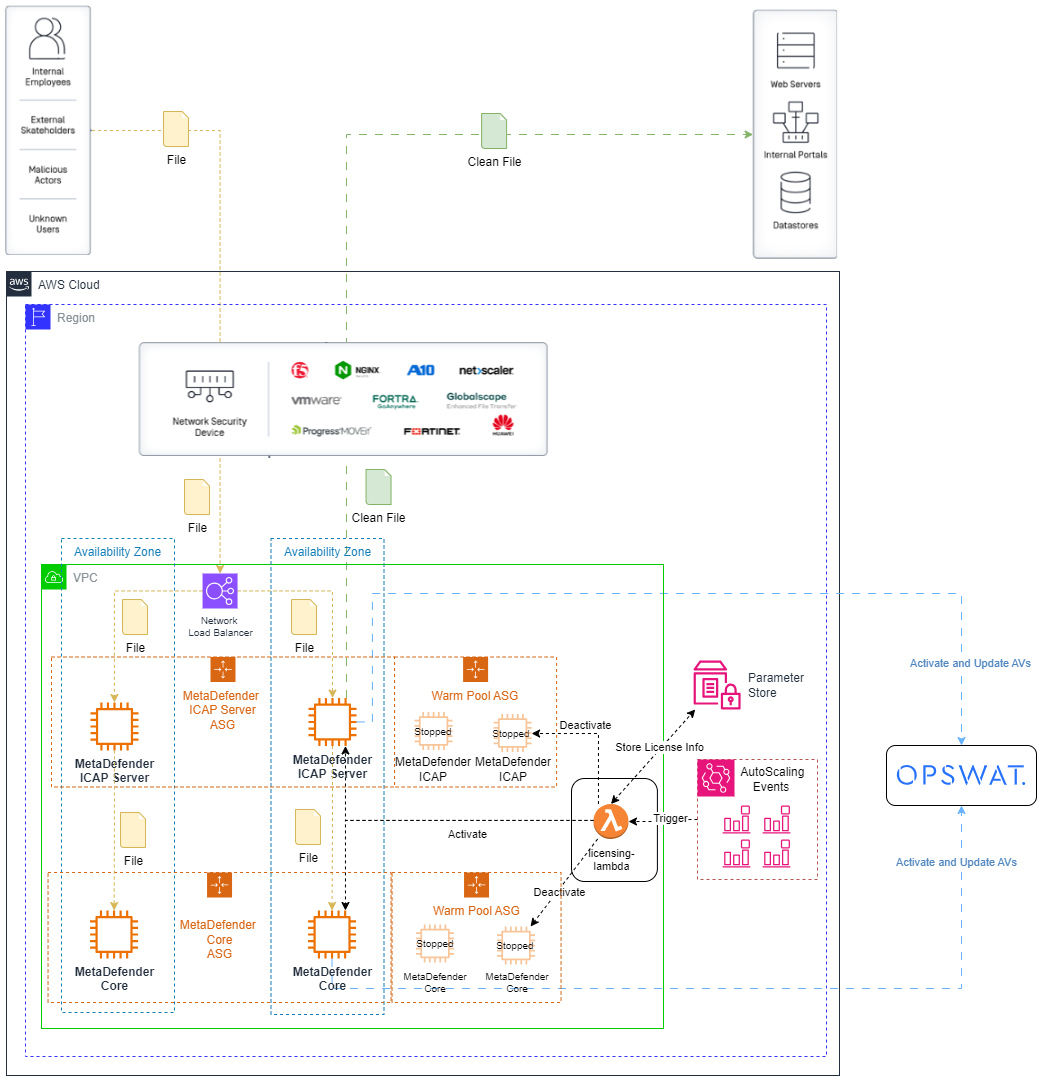The autoscaling deployment is the recommended deployment for production environments that need high availability. This deployment consist of an AWS Auto-Scaling Group (ASG in this page from now on) with instances using the MetaDefender Core AMI published in the AWS marketplace that includes a Standalone MetaDefender Core where the PostgreSQL database is deployed in the same instance than MetaDefender Core.
Only MetaDefender Core Diagram
There are 2 flows for MetaDefender Core to work
Orange Flow: Flow to scan a file from internet hitting the network load balancer that is before the autoscaling group. There are other options for sending files to scan, like do it from a private subnet or through a VPN or any other mechanism to hit the network load balancer that is the point to send the request to the MetaDefender Core instances.
To control the instances activation.
- (Default/Recommended) Passing LICENSE_KEY and APIKEY as environment variables through the user-data. The MetaDefender Core instance will activate the instance on start and deactivate it on shutdown.
- (Optional) Black Flow: The lambda function is triggered based on the ASG events. On activation this flow joins with blue flow, the lambda function stores the licensing information in the parameter store.
- When instance new in ASG, Core is activated and instance started
- When instance moved from ASG to Warm Pool, Core is deactivated on Scale down and instance stopped
- When instance new in Warm Pool ASG, Core is left deactivated and instance stopped
- When instance move from Warm Pool ASG to ASG, instance is started and Core is activated
Blue Flow: Each instance communicates with OPSWAT to activate/deactivate and update the AV engines. In case of using lambda function activation, the deactivation happens between the Lambda function and OPSWAT.

MetaDefender Core and MetaDefender ICAP Server Diagram
Example of the recommended architecture for MetaDefender Core and MetaDefender ICAP Server running in ASG.

Resources Inventory
Access Management
| Service Type | Resource Name | Description |
|---|---|---|
| IAM Role | LambdaAccessRole | Role for Lambdas |
| IAM Role | LambdaExecutionRole | Role with Policy for logging |
| IAM Instance Profile | LambdaInstanceProfile | IAM InstanceProfile that is attached to the EC2 instance |
| IAM Policy | lambdaaccess | Policy attached to LambdaAccessRole for allowing all lambda and and events actions. |
| AWS Lambda Permissions | PermissionForEventsToInvokeLambda | Lambda Permission needed to invoke the DeactivateLambda function |
Networking
| Service Type | Resource Name | Description |
|---|---|---|
| VPC | <VPC Name> (parameter) | Desired Virtual Private Cloud |
| Subnet | terraform-${var.ENV_NAME}/SubnetPublicX | Desired Public Subnet |
| Subnet | terraform-${var.ENV_NAME}/SubnetPrivateX | Desired PrivateSubnet |
| Internet Gateway | terraform-${var.ENV_NAME}/InternetGateway | Internet Gateway for VPC |
| Elastic IP | terraform-${var.ENV_NAME}/NATIP | Public IP for NAT Gateway |
| NAT Gateway | terraform-${var.ENV_NAME}/NATGateway | NAT Gateway to give access to internet from private subnet |
| Route Table | terraform-${var.ENV_NAME}/PublicRouteTable | Route Table for Public Subnet |
| Route Table | terraform-${var.ENV_NAME}/PrivateRouteTable | Route Table for Private Subnet |
Security
| Service Type | Resource Name | Description |
|---|---|---|
| Security Group | MetaDefenderSecurityGroup | Generated security group to allow traffic to MetaDefender REST API. |
Compute
| Service Type | Resource Name | Description |
|---|---|---|
| EC2 Instance | ${var.ENV__NAME}-${var.APP_ _NAME}-instance | Instance to run MetaDefender Core AMI |
| Launch Template | ${var.APP_NAME}-template | Launch Template for MetaDefender Instance |

